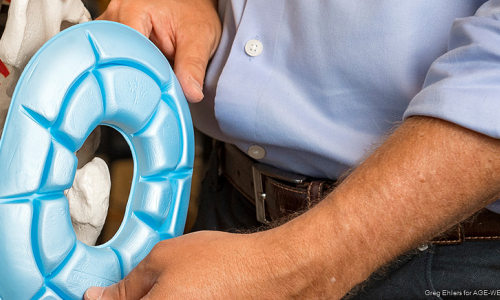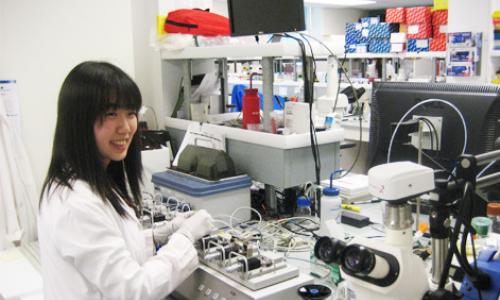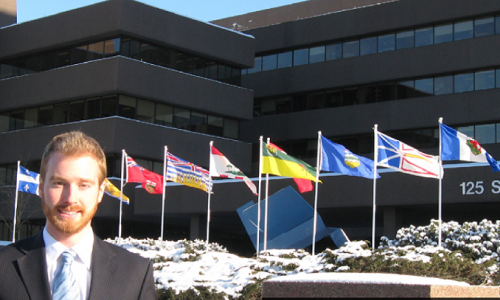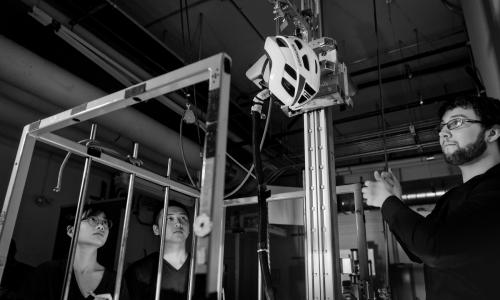
The Indigenous Research Institute promotes research in areas related to Indigenous peoples — in particular, the Aboriginal peoples of Canada — and in a larger context, those of the global community, and facilitates community-based projects with Indigenous partners. The Institute promotes research by bringing together the expertise of Indigenous individuals, groups, and organizations with that of the academic community, to engage in work that meets goals and objectives that is specified by and meaningful to both Indigenous and academic individuals and groups.
John R. Welch is one of the members of the IRI to find out more about his work see below;
Associate Professor • Canada Research Chair
Indigenous Heritage Stewardship • Archaeological Resource Management • Co-Management • Historic Preservation
B.A. (Anthropology, Hamilton College)
M.A. (Anthropology, University of Arizona)
Ph.D. (Anthropology, University of Arizona)
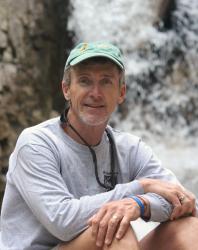
John is a social archaeologist with research interests grounded in broad questions about how culture- and place-based communities define, protect, use, and sustain their biophysical and cultural heritage: How do cultural and historical factors influence whether and how we carry forward places, objects, and traditions? How do heritage-related values and preferences influence governance in general and indigenous sovereignty(s) in particular? What lessons about sustainability and other forms of recommended policy and practice emerge from collaborations with indigenous and place-based communities?
He employs community partnerships as the bases for research, training, and outreach initiatives. The diverse collaborations formalize and advance community agendas to explore what archaeology can do—how archaeological sites, methods, perspectives, and data can enhance land and place histories, stewardship practices, indigenous community capacities, and intercultural reconciliation. The ultimate goal of the work is to harmonize local community, academic, and societal interests relating to landscapes, places, objects, and intangible associations that provide people with orientation, identity, and vitality, as well as food, shelter, and other ecosystem services.
He has worked for and with the White Mountain Apache Tribe in Arizona for three decades and continues to serve as an adviser on the protection of sacred sites and the redevelopment of the Fort Apache and Theodore Roosevelt School National Historic Landmark. Dr. Welch is a member of the Steering Committee for the SFU-based Intellectual Property Issues in Cultural Heritage Project. Research and outreach partners in British Columbia include the Tla’amin, Katzie, and Stó:lō First Nations
When asked to share information about his work John sent us the following;
What good can archaeology do? How shall archaeological sites, perspectives and data be employed in land and place histories, in applying and revitalizing customary stewardship models and practices, in land restoration and intercultural reconciliation?
I am an applied and social archaeologist. I work with and for indigenous communities on projects at the interface of anthropology, archaeology, and resource management. My research interests center on practical issues at the nexus of indigenous peoples’ sovereignty—rights and responsibilities derived from authority over people and territory—and stewardship—sustainable and broadly beneficial uses of sociocultural and biophysical inheritances.
Some refer to the work I do as ‘anthro-apology’ because I spend so much time atoning for problems caused by extractive-consumptive research and land management on indigenous lands. Collectors coerced people into turning over cherished sacred objects and objects of cultural patrimony for sale to museums. Industrialists took advantage of Native people to gain access to their minerals and timber. And, yes, archaeologists failed to heed requests to leave graveyards alone and otherwise privileged academic research and career advancement over the welfare of the communities hosting their studies. If I spend a lot of my time trying to reduce and make amends for these harms, it’s because there is a lot to be done and because it is generally easier to make a mess than to clean it up.
The research-outreach-training partnerships I participate in show that archaeology can be beneficial to indigenous people and communities.Since the mid-1980s, when I began working on White Mountain Apache Tribe lands, my research and preservation efforts have centered on collaborations with tribes in upland Arizona and First Nations in coastal British Columbia. I work with diverse indigenous and non-indigenous colleagues to co-create projects that mobilize indigenous knowledge and pursue community goals. As one part of the current reassessment of what to conserve in the face of global change, these community-based partnerships are committed to balanced reciprocity in both inputs and benefits. By seeking to optimize cultural, educational, economic, political, and scientific values embedded in objects, places, traditions and ecosystems, our research sheds light on experiential and group learning; on collaborative and restorative processes; and on applications of historical data to stewardship policy and practice. We have completed many case studies in repatriation, sacred sites protection, community engagement, and application of traditional knowledge and management.
How about some specifics? With White Mountain Apache advice and support, I have led initiatives centered on the creation of a tribally managed enterprise zone at the Fort Apache and Theodore Roosevelt School. In addition to our successful nomination of the district as a U.S. National Historic Landmark, we raised funds for, constructed, and developed exhibitions in the Nohwiké Bagowa (House of Ancestral Footprints) White Mountain Apache Cultural Center and Museum. We facilitated the transfer of the district’s 400 acres and 26 historic structures, along with $12 million in litigation settlement funds from the US government to the trusteeship of the Fort Apache Heritage Foundation, a tribally chartered non-profit I helped to establish in 1998. In 2013, year we completed the fourth year of a field school, funded by the National Science Foundation Research Experience for Undergraduates program, dedicated to the community-based production of an Ndee (Western Apache) cultural and historical atlas.
The Apache partnership provided a model for more modest, ongoing collaborations with the Katzie, Stó:lō, and Tla’amin First Nations in BC. Each of these efforts has been supported in part by the Intellectual Property issues in Cultural Heritage project (also known as, IPinCH), an initiative I have worked on from 2007 to present (2014). Since our partnership began in 2008, the Tla’amin–SFU field school in archaeology and heritage stewardship has built local and regional support through consultations, site tours, workshops, and community events that have engaged of over 600 children and adults. We have integrated Tla’amin elders’ stories with archaeological data to assemble ‘life histories’ for three places pivotal in Tla’amin conceptions of landscape, history, culture and power. The partnership has also developed web-, print-, and museum-based interpretive materials for diverse audiences.
The overarching goal of all these partnerships is to harmonize local community, academic and public policy interests in the respectful use and protection of landscapes, items and intangible associations that endow people with cultural orientation and vitality, as well as ecosystem services. Partnership experiences are converging on the truth that training, research, and outreach programs are stronger and more relevant when specific local knowledge and community values and interests are driving forces. The partnerships reveal that archaeology offers a dynamic context for creating innovative approaches to the protection, culturally appropriate uses, and perpetuation of significant elements of biophysical and cultural resources. Key issues we are answering include: What elements of natural and cultural legacies will be carried forward? Using what mechanisms? Toward what ends? In other words: How should our inheritance inspire and guide our desired futures?
These issues also guide the courses I teach at SFU, including the Social Science of Resource Management (REM 600), Southwestern Archaeology (Arch 372), and Archaeological Resource Management (Arch 386).
Some recent publications include:
-
Atalay, Sonya, Lee Rains Clauss, Randall H. McGuire, and J.R. Welch, Editors (2014) Transforming Archaeology: Activist Practices and Prospects, Left Coast Press, Walnut Creek, Ca
-
Welch, J.R., Editor (2013) Kinishba Lost and Found: Mid-Century Excavations and Contemporary Perspectives. Arizona State Museum Archaeological Series 206, University of Arizona, Tucson
-
Welch, John R, and Ian Lilley (2013) Beyond the Equator (Principles): Community Benefit Sharing in Relation to Major Land Alteration Projects and Associated Intellectual Property Issues in Cultural Heritage. Report on a Forum at the Annual Meeting of the Society for American Archaeology, 5 April 2013, Honolulu, Hawai‘i.International Journal of Cultural Property 20(4):467–493
-
Welch, J.R. (2012) Effects of Fire on Intangible Cultural Resources: Moving Toward a Landscape Approach. In Wildland Fire in Ecosystems: Effects of Fire on Cultural Resources and Archaeology, edited by K.C. Ryan, A.T. Jones, and C.H. Koerner, pp. 157-170. RMRS-GTR-42-vol. 3. Ft. Collins, CO: U.S. Department of Agriculture, Forest Service, Rocky Mountain Research Station
-
Welch, J.R., Dana Lepofsky, Megan Caldwell, Georgia Combes, and Craig Rust (2011) Treasure Bearers: Personal Foundations For Effective Leadership In Northern Coast Salish Heritage Stewardship, Heritage and Society 4(1):83-114
-
Welch, J.R., And Robert C. Brauchli (2010) “Subject To The Right Of The Secretary Of The Interior”: The White Mountain Apache Reclamation Of The Fort Apache And Theodore Roosevelt School Historic District, Wicazo Sa Review 25(1):47-73
-
Welch, J.R., Mark K. Altaha, Karl A. Hoerig and Ramon Riley (2009) Best Cultural Heritage Stewardship Practices by and for the White Mountain Apache Tribe, Conservation and Management of Archaeological Sites 11(2):148-160
-
Discretionary Desecration: American Indian Sacred Sites, Dzil Nchaa Si An (Mount Graham, Arizona), and Federal Agency Decision Making. (Welch, J.R., Michael V. Nixon and Ramon Riley 2009) American Indian Culture and Research Journal 33(4):117-147










